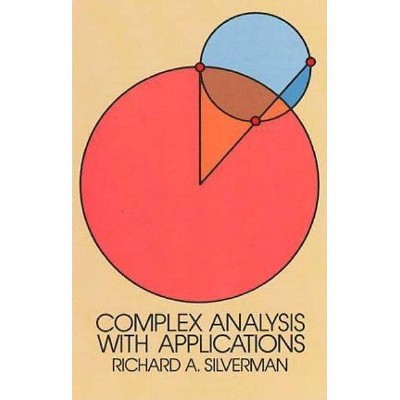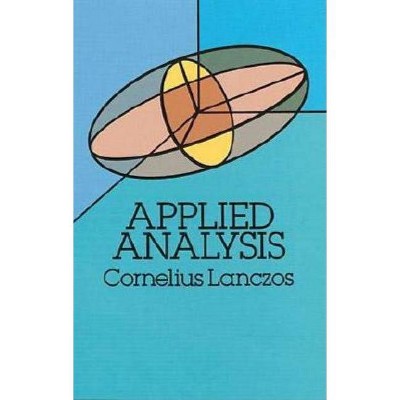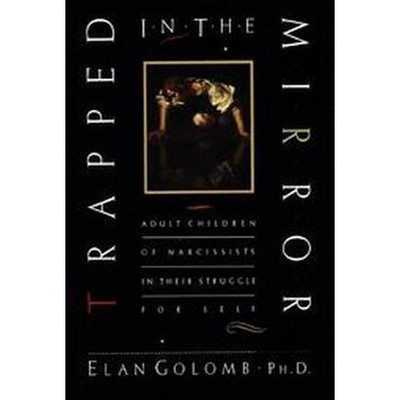Introductory Complex Analysis - (Dover Books on Mathematics) by Richard A Silverman (Paperback)

Similar Products
Products of same category from the store
AllProduct info
<p/><br></br><p><b> About the Book </b></p></br></br><br>Shorter version of Markushevich's<i> Theory of Functions of a Complex Variable, </i> appropriate for advanced undergraduate and graduate courses in complex analysis. More than 300 problems, some with hints and answers. 1967 edition<p/><br></br><p><b> Book Synopsis </b></p></br></br><p>Introductory Complex Analysis is a scaled-down version of A. I. Markushevich's masterly three-volume Theory of Functions of a Complex Variable. Dr. Richard Silverman, the editor and translator of the original, has prepared this shorter version expressly to meet the needs of a one-year graduate or undergraduate course in complex analysis. In his selection and adaptation of the more elementary topics from the original larger work, he was guided by a brief course prepared by Markushevich himself.<br>The book begins with fundamentals, with a definition of complex numbers, their geometric representation, their algebra, powers and roots of complex numbers, set theory as applied to complex analysis, and complex functions and sequences. The notions of proper and improper complex numbers and of infinity are fully and clearly explained, as is stereographic projection. Individual chapters then cover limits and continuity, differentiation of analytic functions, polynomials and rational functions, Mobius transformations with their circle-preserving property, exponentials and logarithms, complex integrals and the Cauchy theorem, complex series and uniform convergence, power series, Laurent series and singular points, the residue theorem and its implications, harmonic functions (a subject too often slighted in first courses in complex analysis), partial fraction expansions, conformal mapping, and analytic continuation.<br>Elementary functions are given a more detailed treatment than is usual for a book at this level. Also, there is an extended discussion of the Schwarz-Christolfel transformation, which is particularly important for applications.<br>There is a great abundance of worked-out examples, and over three hundred problems (some with hints and answers), making this an excellent textbook for classroom use as well as for independent study. A noteworthy feature is the fact that the parentage of this volume makes it possible for the student to pursue various advanced topics in more detail in the three-volume original, without the problem of having to adjust to a new terminology and notation .<br>In this way, <i>Introductory</i><i>Complex Analysis </i>serves as an introduction not only to the whole field of complex analysis, but also to the magnum opus of an important contemporary Russian mathematician.</p><p/><br></br><p><b> About the Author </b></p></br></br><p><b>Richard A. Silverman: Dover's Trusted Advisor <br></b>Richard Silverman was the primary reviewer of our mathematics books for well over 25 years starting in the 1970s. And, as one of the preeminent translators of scientific Russian, his work also appears in our catalog in the form of his translations of essential works by many of the greatest names in Russian mathematics and physics of the twentieth century. These titles include (but are by no means limited to): <i>Special Functions and Their Applications </i>(Lebedev); <i>Methods of Quantum Field Theory in Statistical Physics </i>(Abrikosov, et al); <i>An Introduction to the Theory of Linear Spaces, Linear Algebra, </i>and<i> Elementary Real and Complex Analysis</i> (all three by Shilov); and many more. <p>During the Silverman years, the Dover math program attained and deepened its reach and depth to a level that would not have been possible without his valuable contributions.
Price History
Cheapest price in the interval: 16.89 on November 8, 2021
Most expensive price in the interval: 17.99 on May 23, 2021
Price Archive shows prices from various stores, lets you see history and find the cheapest. There is no actual sale on the website. For all support, inquiry and suggestion messagescommunication@pricearchive.us




















